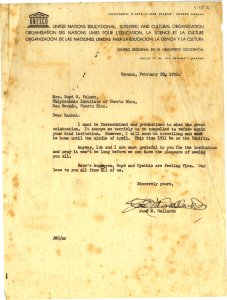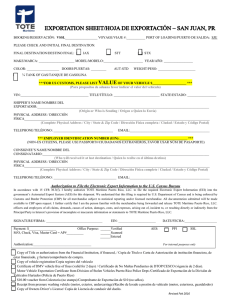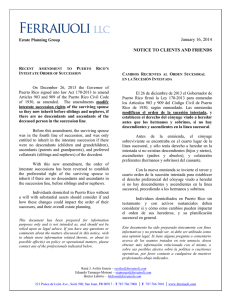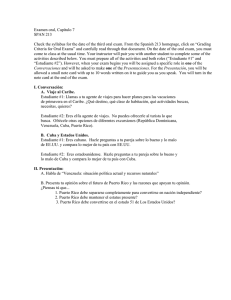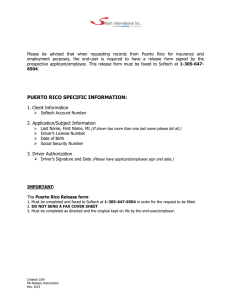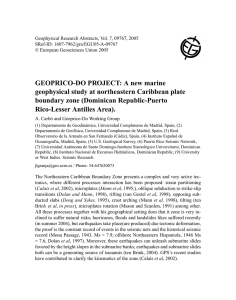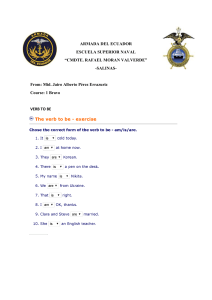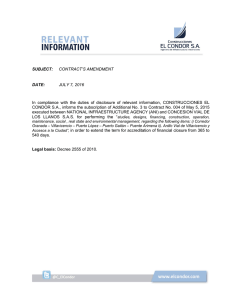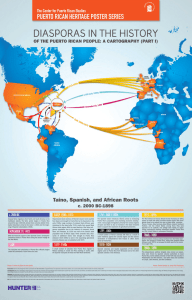1 CP-77 Com prehen si ve agro-morp ho lo gi cal assess ment of the
Anuncio
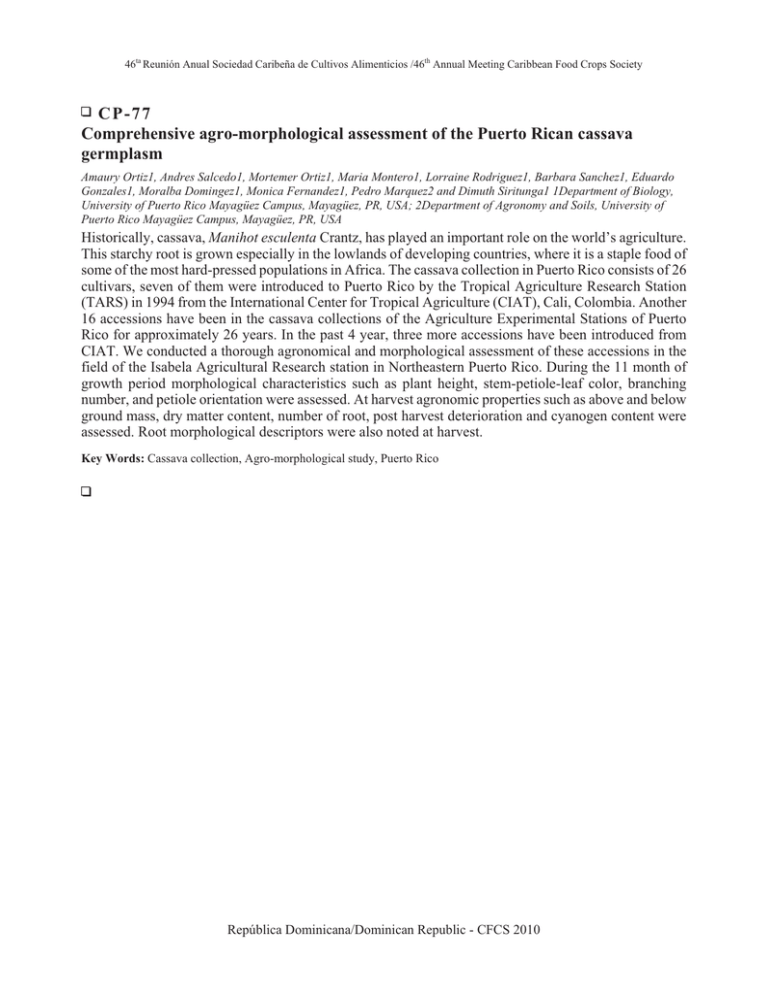
46ta Reunión Anual Sociedad Caribeña de Cultivos Alimenticios /46th Annual Meeting Caribbean Food Crops Society 1 CP-77 Comprehensive agro-morphological assessment of the Puerto Rican cassava germplasm Amaury Ortiz1, Andres Salcedo1, Mortemer Ortiz1, Maria Montero1, Lorraine Rodriguez1, Barbara Sanchez1, Eduardo Gonzales1, Moralba Domingez1, Monica Fernandez1, Pedro Marquez2 and Dimuth Siritunga1 1Department of Biology, University of Puerto Rico Mayagüez Campus, Mayagüez, PR, USA; 2Department of Agronomy and Soils, University of Puerto Rico Mayagüez Campus, Mayagüez, PR, USA Historically, cassava, Manihot esculenta Crantz, has played an important role on the world’s agriculture. This starchy root is grown especially in the lowlands of developing countries, where it is a staple food of some of the most hard-pressed populations in Africa. The cassava collection in Puerto Rico consists of 26 cultivars, seven of them were introduced to Puerto Rico by the Tropical Agriculture Research Station (TARS) in 1994 from the International Center for Tropical Agriculture (CIAT), Cali, Colombia. Another 16 accessions have been in the cassava collections of the Agriculture Experimental Stations of Puerto Rico for approximately 26 years. In the past 4 year, three more accessions have been introduced from CIAT. We conducted a thorough agronomical and morphological assessment of these accessions in the field of the Isabela Agricultural Research station in Northeastern Puerto Rico. During the 11 month of growth period morphological characteristics such as plant height, stem-petiole-leaf color, branching number, and petiole orientation were assessed. At harvest agronomic properties such as above and below ground mass, dry matter content, number of root, post harvest deterioration and cyanogen content were assessed. Root morphological descriptors were also noted at harvest. Key Words: Cassava collection, Agro-morphological study, Puerto Rico 1 República Dominicana/Dominican Republic - CFCS 2010
